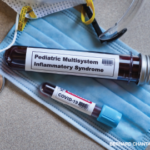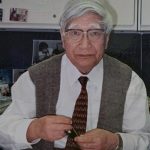“My main message is that this is quite complicated and clearly not all of these patients have the same condition,” he says. “Definitions of disease entities need to be more precise.”
In the second report, Eva W. Cheung, MD, of Columbia University Irving Medical Center, New York, describe 17 previously healthy patients (median age: 8 years; range: 1.8–16 years) who presented with a clinical syndrome characterized by prolonged fever, systemic inflammation, shock, end-organ dysfunction or symptoms reminiscent of KD or toxic shock syndrome and who also had evidence of recent SARS-CoV-2 infection.2
Inflammatory markers were elevated in all patients, and most had lymphopenia, bandemia, elevated troponin T and elevated NT-proBNP. All but one patient had elevated serum interleukin 6.
Fifteen patients required admission to the pediatric intensive-care unit and 10 required vasoactive support, but none of the nine patients with hypoxia required mechanical ventilation.
Eight children met criteria for Kawasaki disease and five met criteria for incomplete KD, but all children had normal coronary arteries by measurement. One child had a medium-sized aneurysm of the left anterior descending coronary artery.
Echocardiograms revealed moderate or more ventricular dysfunction in six patients, and electrocardiograms showed nonspecific ST/T-wave abnormalities in 10 patients, attenuated QRS voltage in one patient and dysrhythmias in three patients.
By May 20, all patients had been discharged home with no fatalities after a mean length of hospital stay of 7.1 days (range: 3–18 days).
Dr. Cheung tells Reuters Health by email, “The most interesting finding of our study was the breakdown of the presenting characteristics and demographics of this syndrome. It really highlighted how different this syndrome is from acute COVID-19 infections, which in the previous months was primarily affecting children with comorbidities and presented with severe respiratory failure, while this multisystem inflammatory syndrome was affecting mostly healthy children with very different clinical features.”
“Children who present with this syndrome have primarily been treated in our institution with supportive therapies, anti-inflammatory medications such as methylprednisolone [especially in moderate and severe cases with shock] and intravenous immunoglobulin for the concern of the development of coronary artery aneurysms, which we rarely observed,” she says.
“We are encouraged that children are recovering and, even some of the sickest have been discharged home,” Dr. Cheung said. “On-going follow-up of these children is needed to understand any long-term effects of this syndrome. Research is actively happening to better understand this syndrome that will help us move forward with recognition and treatment and how this will impact our view of COVID-19 in children overall.”


